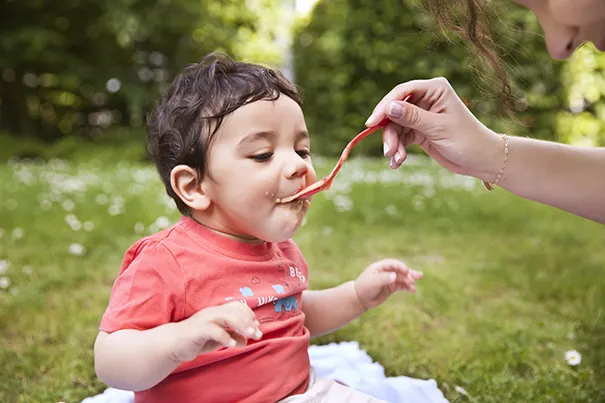Baby Food Allergies and Intolerance
Feeding a fussy toddler is difficult under any circumstances. Add to that food allergies or trouble digesting certain foods, and it becomes even harder. There's a difference between a real allergy (a serious medical problem) and intolerance (which is mostly inconvenient). These guidelines will help you to tell the difference.
Food allergies: symptoms and causes
Allergic reactions are triggered when the body starts making antibodies to proteins in foods. A severe allergic reaction, with difficulty breathing and even collapse and shock, can be a life-threatening emergency. Fortunately, most allergic reactions are milder, with symptoms that may include: hives and other red, spotty rashes, diarrhoea, vomiting, runny nose and wheezing.
Milk
is the most common cause of allergic reactions in small children. About two or three of every 100 children are affected by cows' milk allergy; almost 95 per cent outgrow this by the age of four.
Nuts, shellfish and egg-white allergies
are the second most common. Reactions to these foods are less likely to disappear as your child grows up, and may be lifelong problems.
Peanuts
are another frequent cause of allergic reactions. They are not really nuts – they are legumes like peas, so often children who are allergic to peanuts are not allergic to almonds, walnuts or other true nuts. Be sure to check with your healthcare professional if you are unsure about a potential peanut or nut allergy. Remember that children under four should not be given whole nuts because they cannot grind them adequately with their teeth. As a result, they can easily inhale pieces into the lungs and choke.
Food intolerance: symptoms and causes
Intolerance of certain foods is a less serious but still uncomfortable problem.
Lactose intolerance
is the difficulty digesting the natural sugar in milk. It's the most common intolerance. Wind, bloating and diarrhoea appear within 30 minutes to two hours of drinking milk. Lactose intolerance can begin at any age, but is most common in children over four or five. Often milk products such as yoghurt or cheese cause no problems because the lactose has broken down in processing. Some children can drink a little milk but develop symptoms if they have too much.
Gluten intolerance
the inability to digest a protein found in wheat, can be serious. Thought to be an inherited immune problem in the intestine, it can interfere with the absorption of many nutrients and lead to poor growth and poor weight gain, diarrhoea or constipation, and irritability. Gluten intolerance may appear soon after you introduce wheat products such as cereal or breads into a baby's diet.
What you can do
If you suspect that your child has an allergy or intolerance, consult your healthcare provider. It is not a good idea to make your own diagnosis, as food allergies can be tricky. If your child turns out to have significant allergies, you'll need to become fully informed about the contents of processed foods.
Keep in mind…
Sherbet and margarine contain milk protein, called casein, and your child should avoid foods with calcium caseinate or casein on the label
Gluten can be hidden in vanilla extract, hydrolysed vegetable protein (often found in soya sauce) and ketchup
Children who are lactose intolerant can drink lactose-free milk and dairy products, or can take chewable lactase tablets to replace the missing enzyme
Make sure that your child gets enough calcium in other forms if he cannot tolerate many dairy products. Calcium-fortified orange juice, for example, can substitute for some milk.
Seek professional advice
You may need to consult a paediatric nutritionist to make sure that your child maintains a fully balanced diet while following necessary restrictions.
If your child has the potential for a severe allergic reaction, your healthcare provider may give you a prescription for a special 'epi-pen' containing adrenaline for immediate use in case of such a reaction. Keep some of these pens in various places in the car, at home and at day-care. Make sure that everyone knows how to use them and replace them when they have past their expiry date.
Caregivers, pre-school teachers and friends and other family members who feed your child should all be aware not only of your child's allergies, but also of what to do if a reaction occurs.

